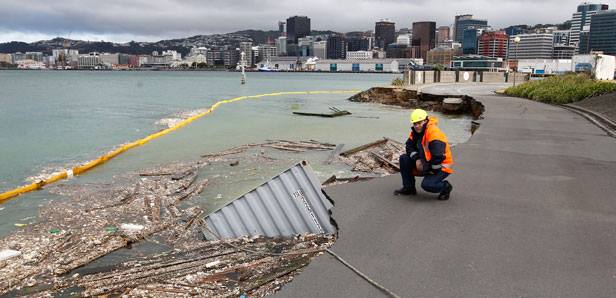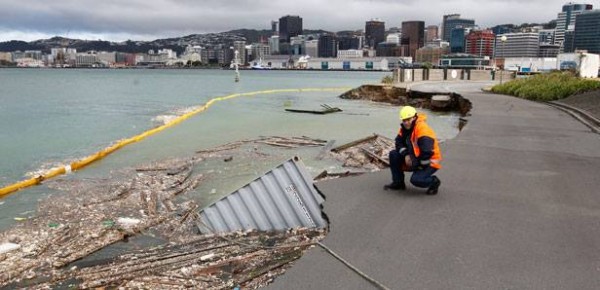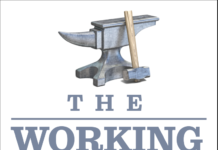From the moment we are conceived to the time we leave, we face risk. As Peter Bernstein put it in his remarkable book on the history of risk: “The capacity to manage risk, and with it the appetite to take risk and make forward-looking choices, are key elements of the energy that drives the economic system forward”.
To better understand risk, let’s get some perspective; in the last five years, around 300 New Zealanders have died at work; an estimated 1,000 Kiwis die every year as a result of work-related illnesses; between 1994 and 2008 over 25,000 people died of some sort of injury; since records began in 1921, around 36,000 people have died in car crashes, and the Christchurch earthquake was the first time in 80 years (and the second time in 100 years) that people have died as a result of building collapse caused by an earthquake.
You get the point: life is full of risk and attempts to mitigate risk are based on pragmatic solutions designed to minimize harm rather than eliminate it. If elimination were the goal we would build 5ft high crash barriers along both sides and down the center of every road in the country. Obviously not desirable, practical or affordable.
As a result of the recent quake in Wellington, and on top of the Canterbury tragedies, we are beginning to gain an understanding of the bureaucratic response to manage a risk that history shows is actually minimal: the level of compliance required of commercial buildings in meeting the provisions in the Building Act as set out in the Building Code regarding earthquake preparedness.
All new buildings must comply 100% with the building code. The building code came into force as a consequence of the 1931 Napier earthquake, and has been updated fairly regularly as new building materials and practices have developed.
Of course many buildings in our cities were built before the current iteration of the building code, and so are not even close to 100% compliant with the current Building Act; (however, it is important to note that they must be compliant with the code of the day in which they were built). This does not mean they are unsafe or pose any risk to life or limb in the event of an earthquake. Wellington’s earthquake was a classic example: a decent shake by all measures, but only three people suffered minor injuries. Sure, the structural integrity of a number of buildings may well have been compromised, however, the lack of any building collapse goes to show that the city has been built reasonably robustly.
If, however, the rumours about the soon-to-be required level of engineering compliance are true, many owners will simply abandon or demolish their buildings rather than spend what may well amount to a prohibitive cost on strengthening.
In cities like Napier and Hastings, where many of the buildings date from 1931-34, the cost of attaining a 21st century level of compliance will be prohibitively expensive compared to the commercial value of the building, and yet the vast majority of these buildings are safe should an earthquake strike.
In fact, the reaction at the time of the Hawkes Bay rebuild was to significantly over-engineer to ensure that such a human tragedy never occurred again if another large earthquake hit. Evidence of the structural integrity of these buildings is found every time any remedial work is done: these buildings are built like the proverbial, and yet they don’t come close to meeting today’s building code.
This is the dilemma, and where risk analysis and market economics comes into play. Everyone agrees that there does need to be some sort of standard that buildings must adhere to, because of course; we don’t want unsafe buildings in our cities, but just what constitutes ‘unsafe’?
The CTV and the PGG buildings that collapsed killing a majority of the 185 people who lost their lives in Christchurch’s February earthquake, had already survived two major earthquakes and five aftershocks measuring greater than 5 on the Richter scale. Both were relatively modern buildings, and the Canterbury Earthquake Royal Commission proved that the engineering specifications for the CTV building were drawn up by someone who was not competent and had lied about his qualifications.! So perhaps the engineering processes and methodology used in assessing structural integrity after a major earthquake needs to be overhauled (and how the buildings in Wellington are assessed post earthquake will be the test to what we have learned from the Chch experience).
I am hopeful that common sense and pragmatism will win the day. That government will provide legislative clarity where confusion currently exists, but that an overreaction won’t force responsible building owners into a situation where the cost of compliance is prohibitive and unnecessary in terms of protecting lives during an earthquake.
Remember those stats in the second paragraph: in the last five years, around 300 New Zealanders have died at work; an estimated 1,000 Kiwis die every year as a result of work-related illnesses; between 1994 and 2008 over 25,000 people died of some sort of injury; since records began in 1921, around 36,000 people have died in car crashes… How about the government puts the thought time, energy and resources into areas where a real difference can be made in terms of saving lives and improving society.
So lets all take a deep breath and advocate for a pragmatic and sensible approach to building safety that ensures risk is assessed in a way that allows sensible choices to be made. There are many risks to doing business in this day and age; history shows that being killed in an earthquake is not one of them.







Hah Hah try telling that to the family members of an earthquake victim. Also remember many hundreds ( possibly more no statistics seem available) were severely injured in those quakes as in losing legs… being trapped for hours in collpased buildings and so on
Also by that logic we shouldn’t worry about coal mining as only 29 people have been killed doing that in recent years….
Hi Janine,
I wondered if I would get any responses like this; so thanks for not disappointing. Under your logic, we should ban driving – or four-lane every road in the country; or erect crash barriers down every medium strip from Cape Reinga to Bluff.
I think that perhaps you missed the point of the post: i am not belittling the injury caused by earthquakes, and I have great sympathy for those so injured as a consequence of an earthquake; but no more so than those maimed by dangerous drivers or negligent bosses. The human cost of simply going to work every day, or driving a car along a motorway is far greater than that caused by earthquakes.
To take your logic to its natural conclusion; close every building that is not 100% up to today’s code, therefore closing down a significant number of businesses, thus putting people out of work due to an event that has killed people twice in the last 100 years, therefore further driving down the economy etc etc… You get the point (or perhaps not).
Here’s an idea; why don’t we (as a nation) self-insure? We could call it – ummhh – “State Insurance office” and “Earthquake and War Damage Commission”? Imagine if we saved our own money to pay for any consequences of these events, and didn’t need to rely on overseas profit-oriented insurers? I have no doubt that the Economists and Journalists will have a plethora of “This won’t work” and “this is blasphemy and a breach of the TPP” explanations as to my naivety……..
Comments are closed.